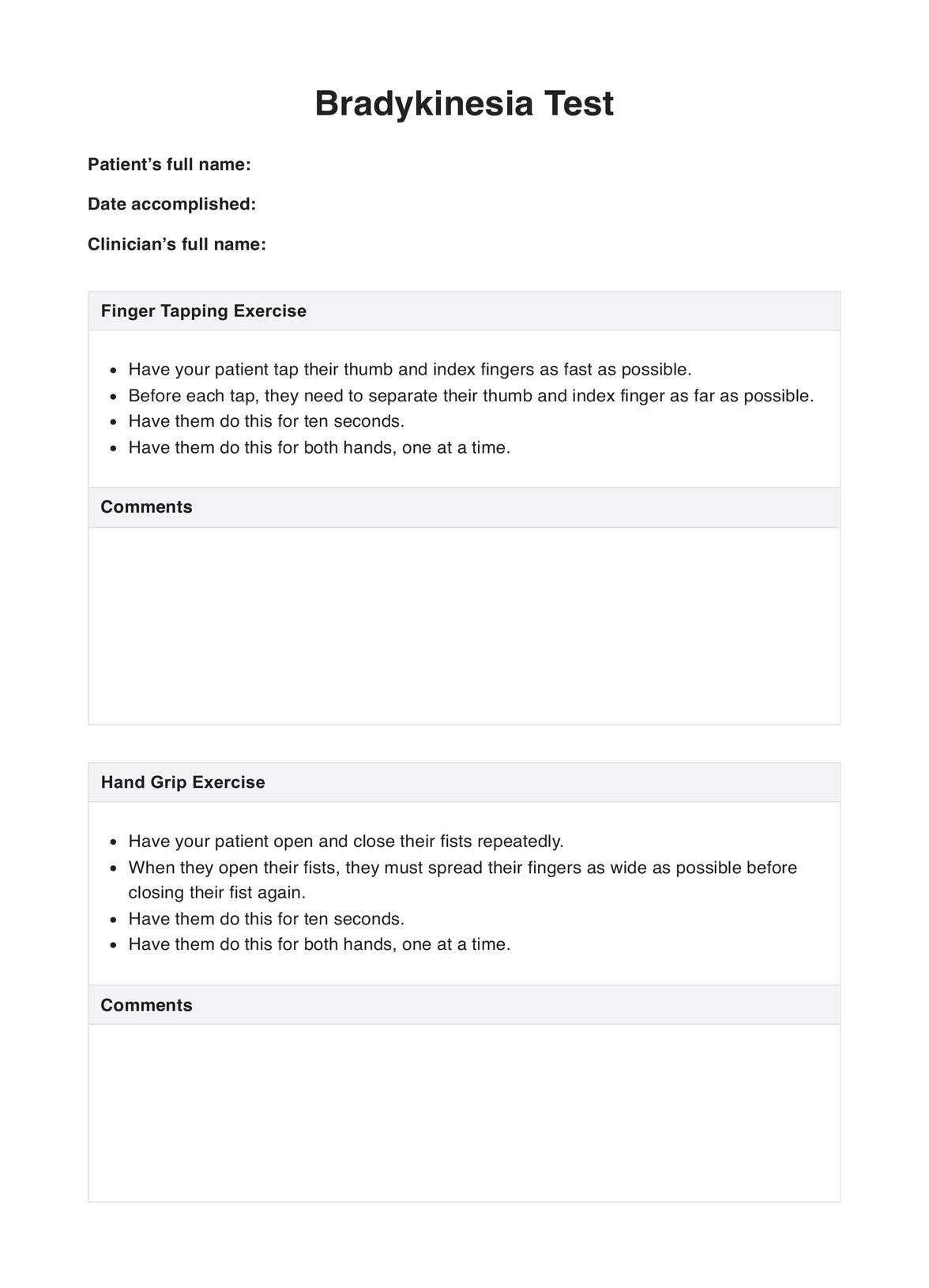No. The Bradykinesia Test only checks if the patient has signs of Bradykinesia, which is a symptom of Parkinson’s Disease. It’s not enough to give you the full picture of the patient.

If your patient shows signs of having Parkinson’s Disease, perform the Bradykinesia Test, which is a series of exercises where the patient has to perform rapid movements. This is to determine the likeliness of having Parkinson’s Disease.
No. The Bradykinesia Test only checks if the patient has signs of Bradykinesia, which is a symptom of Parkinson’s Disease. It’s not enough to give you the full picture of the patient.
You should conduct tests that check rigidity, tremors, gait, and balance. It’s best to do these before conducting scans.
If you downloaded our Bradykinesia Test sheet template, you could store them in your filing cabinet if you printed them or within a folder on your computer. To be extra safe, you can store them with us by subscribing to our platform! To reiterate, storing them with us is equivalent to making backups.
EHR and practice management software
*No credit card required
Free
$0/usd
Unlimited clients
Telehealth
1GB of storage
Client portal text
Automated billing and online payments